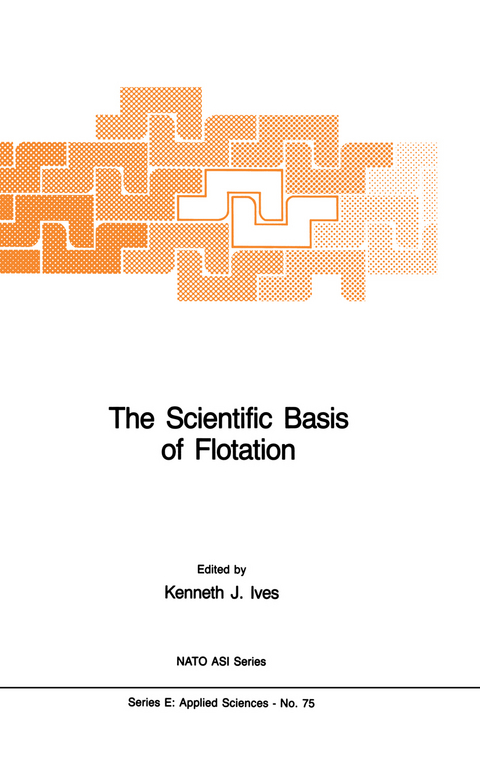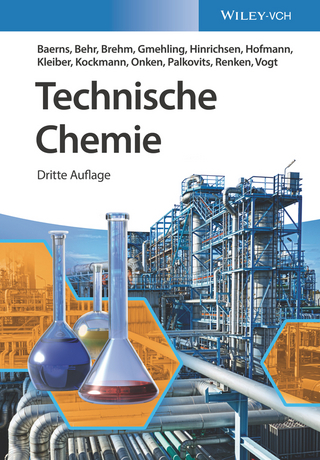
The Scientific Basis of Flotation
Seiten
1983
Kluwer Academic Publishers (Verlag)
978-90-247-2907-4 (ISBN)
Kluwer Academic Publishers (Verlag)
978-90-247-2907-4 (ISBN)
Proceedings of the NATO Advanced Study Institute on the Scientific Basis of Flotation, Cambridge, England, July 5-16, 1982
K.J.Ives Professor of Public Health Engineering University College London Industrial application of the use of bubbles to float fine particles in water began before the beginning of this century, in the field of mineral processing. Such bubble flotation was applied very little outside mineral processing, until about 1960 when the dissolved air process, which has already had some success in the pulp and paper industry, was applied to water and wastewater treatment. The subsequent two decades saw not only a growth development for water and wastewater treatment, but also a growing cognisance of the similarities that existed with mineral processing flotation. Therefore the time seemed ripe in 1982 for a joint meeting between experts in these two major fields of flotation to put together the Scientific Basis of Flotation in the form of a NATO Advanced Study Institute. Attended by about 60 specialists, mainly post doctoral, from 17 countries, this Study Institute in residence for two weeks in Christ's College, Cambridge (UK) heard presentations from several international experts, principally the 8 co-authors of this book. The integration of the various scientific disciplines of physics, physical chemistry, colloid science, hydrodynamics and process engineering showed where the common basiS, and occasional important differences, of flotation could be applied to mineral processing, water and wastewater treatment, and indeed some other process industries (for example: pharmaceuticals, and food manufacture).
K.J.Ives Professor of Public Health Engineering University College London Industrial application of the use of bubbles to float fine particles in water began before the beginning of this century, in the field of mineral processing. Such bubble flotation was applied very little outside mineral processing, until about 1960 when the dissolved air process, which has already had some success in the pulp and paper industry, was applied to water and wastewater treatment. The subsequent two decades saw not only a growth development for water and wastewater treatment, but also a growing cognisance of the similarities that existed with mineral processing flotation. Therefore the time seemed ripe in 1982 for a joint meeting between experts in these two major fields of flotation to put together the Scientific Basis of Flotation in the form of a NATO Advanced Study Institute. Attended by about 60 specialists, mainly post doctoral, from 17 countries, this Study Institute in residence for two weeks in Christ's College, Cambridge (UK) heard presentations from several international experts, principally the 8 co-authors of this book. The integration of the various scientific disciplines of physics, physical chemistry, colloid science, hydrodynamics and process engineering showed where the common basiS, and occasional important differences, of flotation could be applied to mineral processing, water and wastewater treatment, and indeed some other process industries (for example: pharmaceuticals, and food manufacture).
The Froth Flotation Process: Past, Present and Future — In Brief.- Physics and Hydrodynamics of Bubbles.- Thin Films, Contact Angles, Wetting.- Some Aspects of the Physical Chemistry of Solid/Water Interfaces.- Experimental Techniques in Flotation.- Flotation in Mineral Processing.- Engineering Aspects of Flotation in the Minerals Industry: Flotation Machines, Circuits and their Simulation.- Flotation in Water Treatment.- Wastewater Treatment.- Appendix List of those attending the NATO Advanced Study Institute of Christ’s College, Cambridge (UK) 5–16 July, 1982.
| Erscheint lt. Verlag | 31.12.1983 |
|---|---|
| Reihe/Serie | NATO Science Series E ; 75 |
| Zusatzinfo | VI, 429 p. |
| Verlagsort | Dordrecht |
| Sprache | englisch |
| Maße | 155 x 235 mm |
| Themenwelt | Naturwissenschaften ► Chemie ► Technische Chemie |
| Technik | |
| ISBN-10 | 90-247-2907-6 / 9024729076 |
| ISBN-13 | 978-90-247-2907-4 / 9789024729074 |
| Zustand | Neuware |
| Informationen gemäß Produktsicherheitsverordnung (GPSR) | |
| Haben Sie eine Frage zum Produkt? |
Mehr entdecken
aus dem Bereich
aus dem Bereich
erneuerbare Energien und Speichertechnologien für die Energiewende
Buch | Softcover (2023)
De Gruyter Oldenbourg (Verlag)
69,95 €
Daten, Formeln, Normen, vergleichende Betrachtungen
Buch | Softcover (2024)
Europa-Lehrmittel (Verlag)
38,90 €


